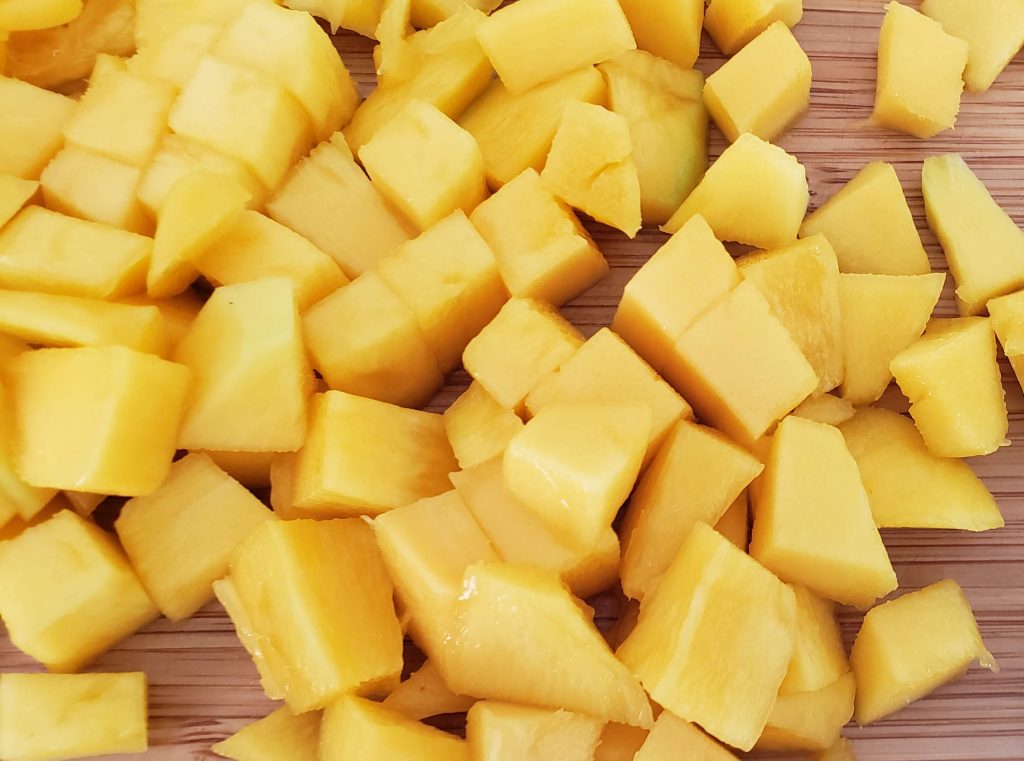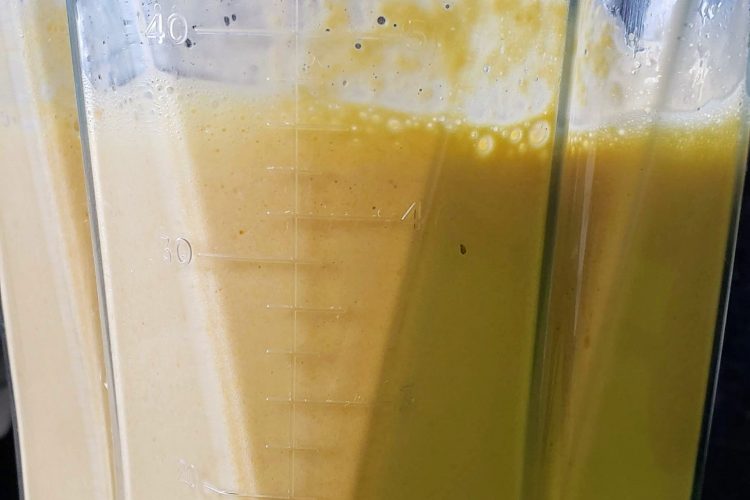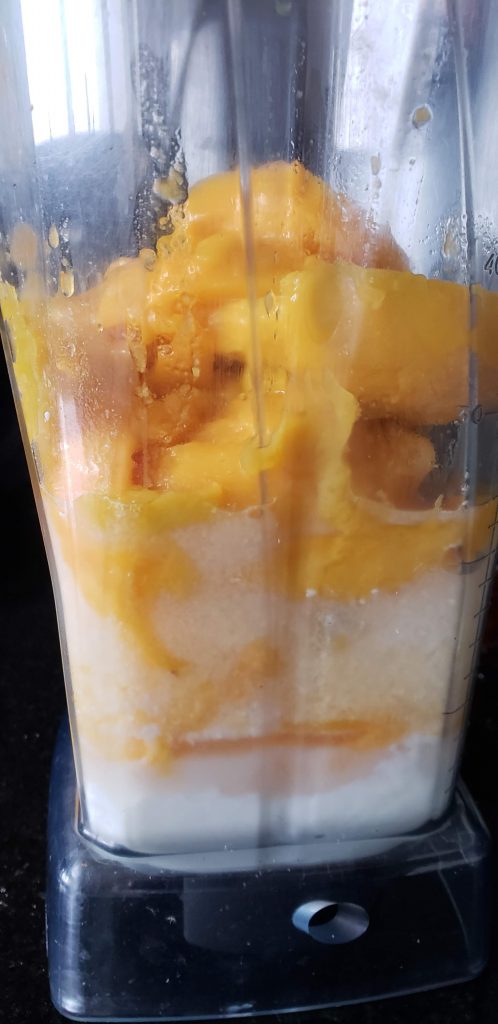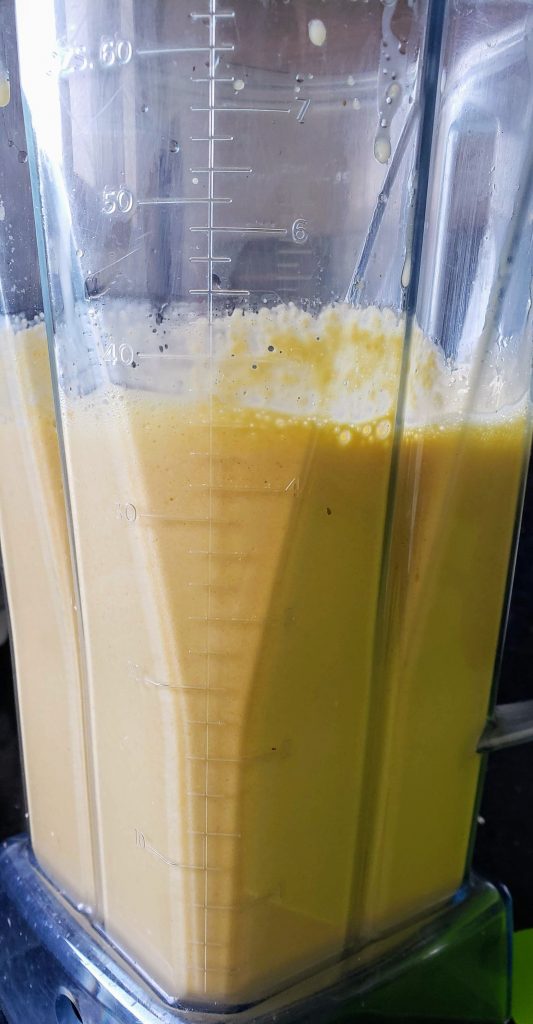There are about 1,100 varieties of mangoes in the world with a majority of the fruit coming from India. Mangoes are a wonderful summer fruit. They are delicious and nutritious. My Mom used to say (translated into English, of course) “In the morning, they are Gold, in the afternoon, Silver, and the evening, Brass”. In other words, the earlier you ate them in the day, the better.
Choose mangoes by softness and smell. Like avocados, they should feel soft near the middle and the stem should smell very fragrant when they are ripe. The ones in Brazil are green with tiny white spots. I have noticed that the ones with the larger spots are sweeter than the ones with tiny spots. Mangoes continue to ripen at room temperature and continue to ripen very slowly even in the refrigerator.
You need to cut them to the left or right of the center, parallel to the wide side to avoid the large pit. I like to score each half into dice while it is still in its skin and then scoop the diced flesh out with a spoon. Just like an avocado.
Prep time: 10 minutes
Blend time: 2 minutes
Yield: 4 cups
ingredients
- 2 ripe mangoes, cut into large dice or halved and scooped out
- 1 cup plain yogurt
- 1 cup of ice cubes
- 1 piece of cardamom, crushed under a rolling pin, seeds only; or use a pinch of Simple Chai Masala which is just ground cardamom and sugar
- Sugar to taste, if needed
- 1-2 tablespoons Chia seed, optional
INSTRUCTIONS

Diced mango
1.Put the yogurt and cardamom seed in the blender.
2. Add diced or as scooped out pulp.
3. Add ice and sugar, if needed. Add chia, if using.
4. Blend until smooth. Serve chilled.
Note: Mangoes are a very versatile fruit. They can be served in sweet or savory dishes. I have served and/or eaten mangoes:
- Raw, sliced or diced or as fruit kabobs;
- As a fruit leather (aam papad);
- As a salad;
- As Chaat;
- Shredded, in chutney;
- In a spicy, sweet and sour stew (Guramba), sour raw mangoes;
- As a pickle, sour raw mangoes;
- As a powdered condiment (Amchur);
- As a part of smoothies, lassis or milkshakes;
- As ice cream;
- As additions to granola or oatmeal;
- As a decoration for cheesecake or fruit tarts;
- Chilled over warm Tapioca pudding; and,
- Chilled with warm Thai-style sticky rice.
Mangoes promote bone health; reduce the risk of hypertension; prevent constipation; prevent macular degeneration; are great antioxidants; and, protect against prostate and colon cancer.
Here are a few nutrition facts about mangoes from the Medical News Today newsletter:
One cup of diced mango contains:
- 100 calories
- 1 gram of protein
- 0.5 grams of fat
- 25 grams of carbohydrates (24 grams of sugar and 3 grams of fiber)
- 100 percent of the daily need for vitamin C
- 35 percent of vitamin A
- 20 percent of folate
- 10 percent of vitamin B-6
- 8 percent of vitamin K and potassium
Mangoes also contribute copper, calcium, and iron to the diet as well as antioxidants such as zeaxanthin and beta-carotene.
Hari Ilachi (green cardamom) – Sweet, slightly astringent. Green cardamom can be added early on in the cooking process. It is used in both sweet and savory dishes. Green cardamom is a major component in Chai Masala. It is used to season drinks such as Mango Lassi. It complements dairy-based desserts. It is used in making biriyanis and lamb or goat curries. Cardamom is chewed whole as a breath freshener. It helps to add a little sugar in the blender to help grind cardamom into a fine powder. Cardamom is a natural bactericide and helps prevent cavities; helps lower blood pressure; aids in digestion; and, helps clean out the urinary tract, bladder, and the kidneys as it is a natural diuretic.
Written by Anju Kapur of Anju’s Table. All content and images on this site are copyright protected. Please do not use any of my images without my permission. Should you wish to share this recipe on your site, please add a link to this post as the source.


